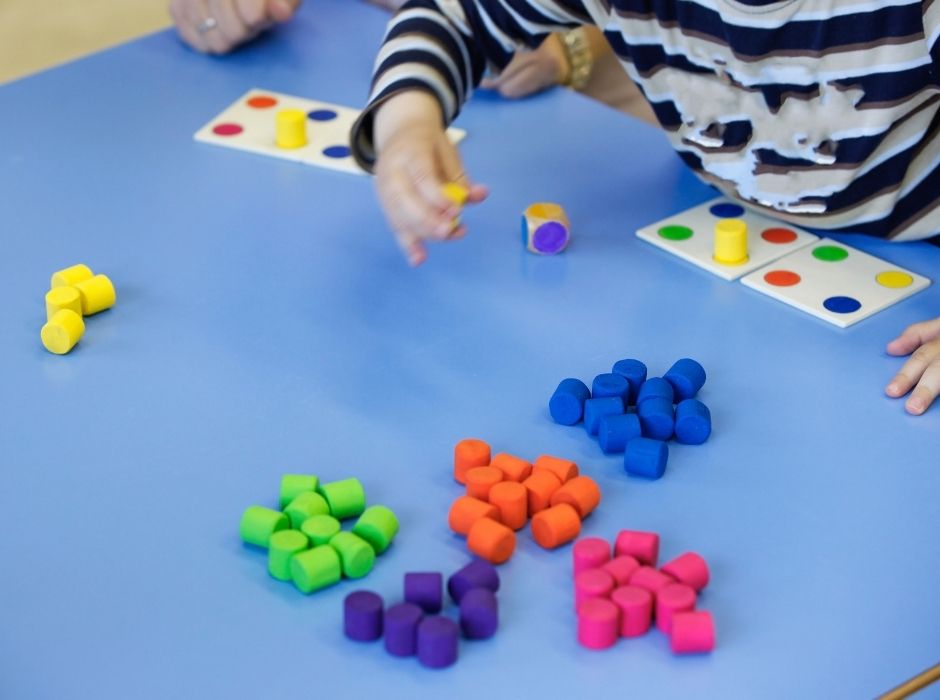In children, visual attentiveness is connected with memory in a particular way (we tend to remember what we pay more attention to). It can be very useful in all areas – at school while learning, at home and with friends while relating socially, with strangers in a situation of self-defense – making it essential for psychomotor development.
So how do you encourage visual memory? It is certainly helpful to create a playful environment that can encourage attentiveness in children. This can be done by using fun, properly timed exercises and colorful tools. They should be renewed each time, which can be achieved by simply changing how you present them.

A classic Wild West gambling game! 🙂 Use three identical cups and place a small ball (or another small object) under one of them. Slowly switch the cups around. At the end, your child can guess which cup the ball is under. In order to answer correctly, they have to follow all your movements carefully.
If your child is particularly tech-savvy, you can try searching and downloading a find the difference app online, or you can buy a magazine for children with many find the difference activities.
I’m sure you know this game! If you can’t find a Memory game lying around, you could download some cheap cards online and cut them out yourself, or you could buy them at your local bookstore (they are fairly easy to find). Also, in this case, there are many Memory game apps in the App Store.
You can reuse the memory cards for this game! Show three different images to your child and then cover them. Then uncover two of the three images and ask which one is missing. The number of images can be increased gradually throughout the game.
Show a detailed image to your child (such as a book illustration), then cover it and ask a specific question about it. Here’s an example:

You can ask your child some questions like:
Is there a better exercise for encouraging visual attentiveness? Puzzles, as mentioned in our other articles, are all-round games: perfect for memory, attentiveness, and logical reasoning stimulation, as well as for improving spatial orientation abilities in children.
These images always reveal something odd (a missing piece, a useless object, wrong positioning, an impossible situation, etc.). Some are very difficult while others are simpler. Show them to your child and ask them to find out what’s wrong with them. It’s a great exercise for stimulating logical reasoning.

You can also try this at home. Wear a pair of uneven socks or place something on your head. You can also move things around at home and make them look absurd. For example: place a vase in front of the entrance door, tilt the painting that is hanging on your wall. See if your children can point out the “oddness” by using visual attentiveness: it’s a very useful and fun exercise.
Try out some of these games and see what your child likes best. They all help visual attentiveness, but personal preferences mean that one or two will become family favourites!
Allow your child to engage with puzzles and memory in the Smart Games section. You will also find many other visual attention activities in the stories: in the episode “Where is Melvin the Rabbit?” from The Farm series, in “Luna meets Mauritius!” in the collection set in space, and in the “You run like you eat!” mini-story.
Melvin the Rabbit
Luna meets Mauritius
You run like you eat!